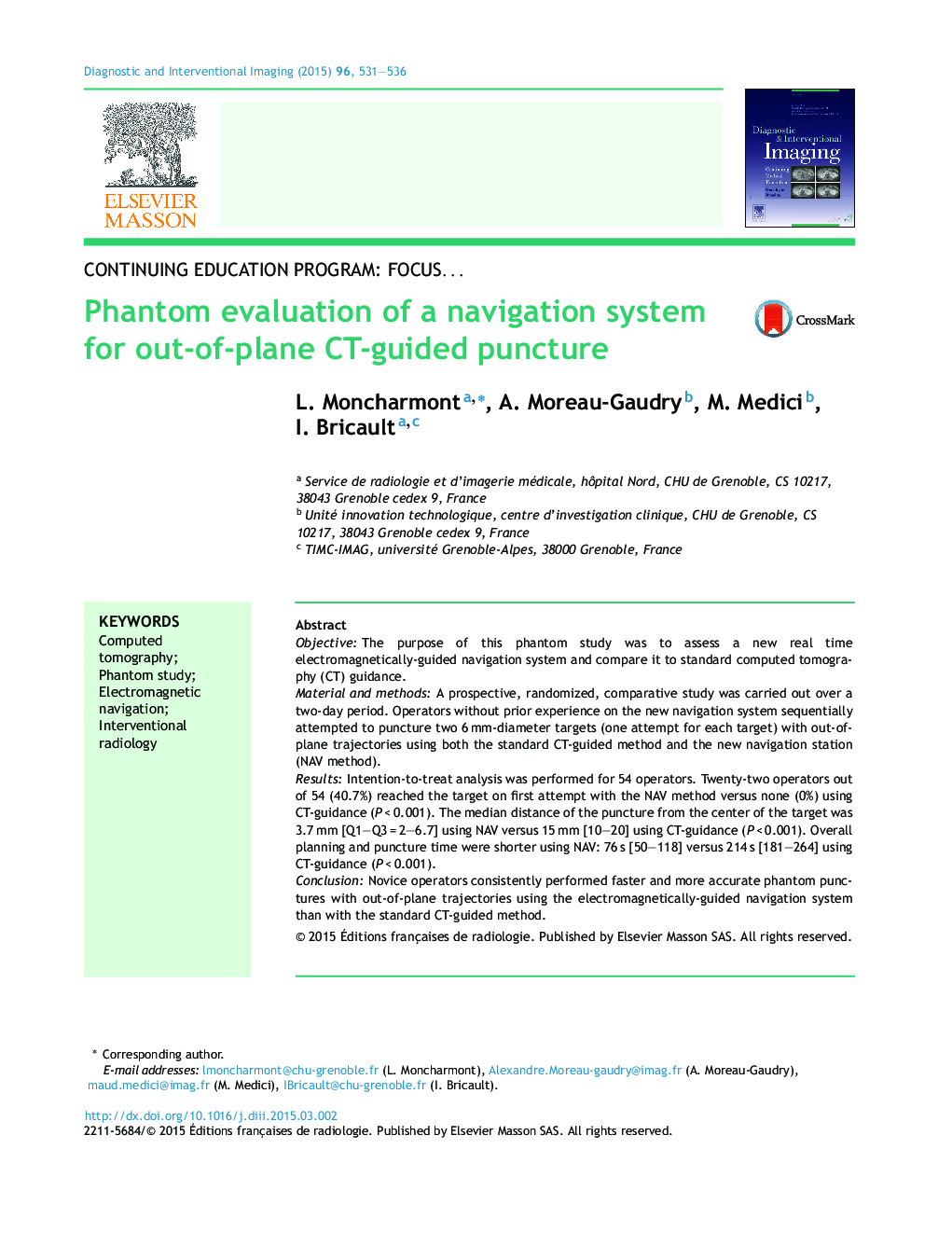| Article ID | Journal | Published Year | Pages | File Type |
|---|---|---|---|---|
| 2737741 | Diagnostic and Interventional Imaging | 2015 | 6 Pages |
ObjectiveThe purpose of this phantom study was to assess a new real time electromagnetically-guided navigation system and compare it to standard computed tomography (CT) guidance.Material and methodsA prospective, randomized, comparative study was carried out over a two-day period. Operators without prior experience on the new navigation system sequentially attempted to puncture two 6 mm-diameter targets (one attempt for each target) with out-of-plane trajectories using both the standard CT-guided method and the new navigation station (NAV method).ResultsIntention-to-treat analysis was performed for 54 operators. Twenty-two operators out of 54 (40.7%) reached the target on first attempt with the NAV method versus none (0%) using CT-guidance (P < 0.001). The median distance of the puncture from the center of the target was 3.7 mm [Q1–Q3 = 2–6.7] using NAV versus 15 mm [10–20] using CT-guidance (P < 0.001). Overall planning and puncture time were shorter using NAV: 76 s [50–118] versus 214 s [181–264] using CT-guidance (P < 0.001).ConclusionNovice operators consistently performed faster and more accurate phantom punctures with out-of-plane trajectories using the electromagnetically-guided navigation system than with the standard CT-guided method.
